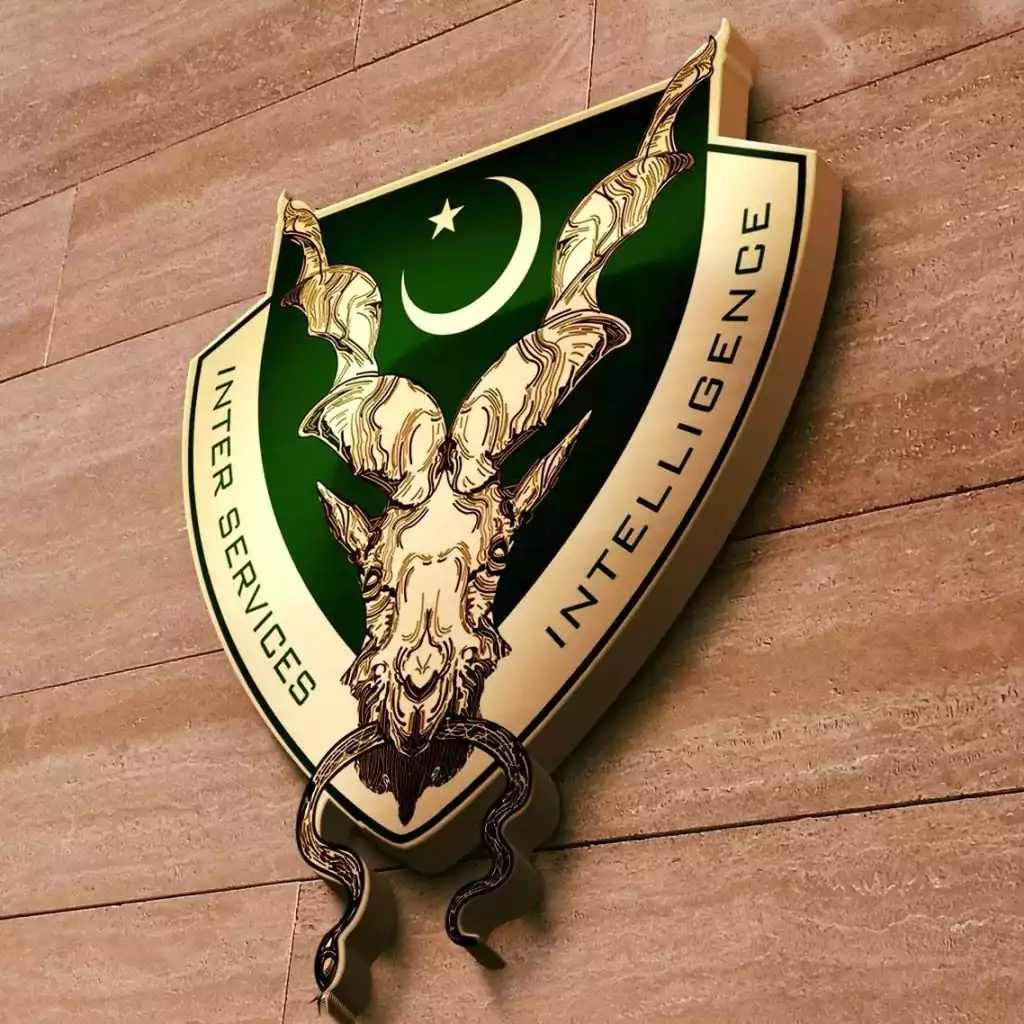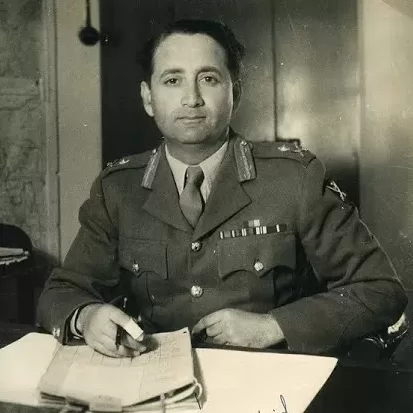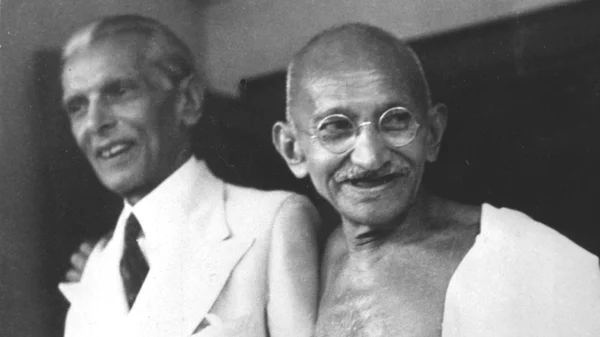India and Pakistan gained independence in 1947 amid chaos and violence. All assets including armed forces were divided between the two countries. Both countries inherited intelligence agencies set up by British colonial authority. In British India, the most effective intelligence set up was civilian. Main concern of the authorities was attempts to tamper with the loyalty or neutrality of general population against the established order run by an alien colonial government. Intelligence Bureau (IB), manned by police officers was responsible for informing higher authorities about the currents of the society. IB had its reach to the lowest levels of the society. Military Intelligence (MI) dealt with internal discipline of the army. During Second World War, threat of subversion of Indians by rival German and Japanese governments resulted in expansion of intelligence set up and cooperation between civilian and military intelligence agencies.
In India, political subversion was the main concern of colonial authorities; therefore intelligence set up was oriented towards this problem. During Second World War, this threat was exacerbated. Indian Political Intelligence Bureau (IPIB) headed by Sir Philip Vickery coordinated with Delhi Intelligence Bureau (DIB) to tackle this issue of political subversion. British intelligence outfit, Secret Intelligence Service (SIS) known as M-16 ran a regional headquarters from Baroda House in Delhi under the cover name of Inter Services Liaison Division (ISLD). It was headed by Wing Commander Pile. A forward station of ISLD close to the theatre of war operated from Belvedere House in Calcutta. ISLD was a very minor player during that time and other intelligence agencies played a more important role in India and South East Asian war theatre. Telephone and wireless were the main communication systems during that time and a Wireless Experimental Station (WES) was established at Anand Parbat near Delhi. Colonel Peter Marr-Johnson was the head of WES. Two sub-stations of WES located at Barrackpur and Bangalore intercepted Japanese communications while sub-station at Abbottabad on North West frontier monitored Russian communications in Afghanistan.
After the fall of Burma to Japanese army, British ran behind the enemy line operations through a separate intelligence agency named Special Operation Executive (SOE). Orde Wingate’s ‘Chindits’ and paramilitary Force 136 were engaged in a wide variety of operations including espionage, sabotage, paramilitary operations and organizing local resistance groups. The lines between civilian and military intelligence got blurred during Second World War. MI was involved with all intelligence agencies in the context of subversion of armed forces. Japanese recruited Indian Prisoners of War (POW) in Indian National Army (INA) to fight against British.

In August 1947, Indian army headquarters at Delhi was inherited by Indian army and functioning military directorates including Military Intelligence (MI) provided established infrastructure to Indian army. Brigadier Chand Narain Das (5/6 Rajputana Rifles) was the first Indian DGMI. In contrast, Pakistan army had to establish new intelligence set ups for the armed forces. In the beginning, Military Operations (MO) directorate then headed by Brigadier Muhammad Sher Khan (6/13 Frontier Force Rifles; now 1 FF) was responsible for operations, plans and intelligence. In March 1948, MI was set up as a separate directorate and Colonel Muhammad Abdul Latif Khan (1/7 Rajput Regiment) was appointed first Director of MI.
Pakistan inherited School of Military Intelligence based in Karachi. In July 1947, school was shifted to Murree under its officiating commander Major Bhagat Singh. Captain Akhtar Alam took over from Bhagat in July 1947. In December 1947, Major Muhammad Zaheeruddin was appointed commandant of the school. In May 1948, Zaheeruddin handed over the charge to Major Ahsan Mohammad Khan to become the founding member of Inter Services Intelligence (ISI).
It is commonly believed that Major General Walter Joseph Cawthorne (1896-1970) was the first head of ISI which is not correct. Cawthorne was not British but Australian and was nick named Bill. He was an extraordinary character and a little information about Bill Cawthorne is essential to understand his role in Pakistan. He started his career as Sergeant Major in Australian Imperial Army during First World War and later transferred to Indian army — 16 Punjab Regiment. During Second World War, he headed Middle East Intelligence Center in Cairo and then came back to India as Director Military Intelligence (DMI) at Army Headquarters. During Second World War, MI was focused on South East Asian theatre of war. General Archibald Wavell specially requested the services of an interesting character Peter Fleming (brother of Ian Fleming; creator of James Bond character) to work on his deception staff in India. Peter was a traveler, journalist and intelligence operator. In March 1942, he was appointed GSI (d); special advisor for deception to Cawthorne. In 1944, Peter was heading a special D-Division responsible for all. Deception operations in South East Asian theatre.
After partition, Cawthorne opted for Pakistan army and appointed as officiating deputy to Chief of Staff ‘COS) Lieutenant General Ross C. McCay (another Australian who transferred first to 17th Cavalry of Indian army and later to 6 Rajputana Rifles). Bill served as Deputy COS from 1948 to 1951 and in this capacity was given the task by the govern-‘-Tient to organize the infrastructure of SI. Bill left Pakistan in 1951 when ISI .vas still in its infancy. From 1951 to 1954, he was Director of Joint Intelligence Bureau (JIB) of Australian defense ministry. He came back to Pakistan in 1954 as Australia’s High commissioner to Pakistan and had good personal rap-port with President Sikandar Mirza (former Defence Secretary) and all senior Pakistani army officers espe-cially C-in-C General Muhammad Ayub Khan. In October 1958, when Ayub Khan removed Mirza and exiled him to London, Bill was the only per-son allowed to see him off at the air-port. This was to make sure that Mirza was not ‘bumped off by Ayub. Bill left Pakistan in 1959 to serve as Australia’s High Commissioner to Canada. This was a short tenure and in September 1960, he was brought back to head Australian Secret Intelligence Service (ASIS). In early 1960s, Bill was instrumental in set-ting up South Asian intelligence set up in Jakarta for Australian intelli-gence. This set up rapidly expand-ed and became the most effective intelligence organization in the region. This was later taken over by Central Intelligence Agency (CIA) and used for its operations in the region. Bill’s only son Michael won sword of honor at Royal Military College Sandhurst but was killed in action in 1951 in Korean war; just few months after his graduation.
In 1948, C-in-C of Pakistan army, General Douglas Gracey and Defence Secretary Sikandar Mirza asked Bill Cawthorne to set up a new intelligence organization. Bill selected Director of Pakistan National Guards (PNG) Colonel Shahid Hamid (3rd Cavalry & Royal Indian Army Service Corps) to set up this new set up and command it. It was an inter-services intelligence organization and officers from all three services were inducted. It is an interesting fact that Shahid and M. A. Latif were not only course mates but in the same No. 5 Company at Sandhurst and both started two intelligence outfits of Pakistan army (Shahid was founding father of ISI and Latif of MI).

On July 14, 1948, Shahid started his task in Karachi in a small one story building that is now office of military cantonment lands. He started from scratch with a skeleton staff and very limited resources. Today ISI is loathed and feared by many but the organization had a very humble start and in early days, packing crates were used as chairs and desks. Shahid as head of ISI was responsible to C-in-Cs of all three services. Shahid’s GSO-1 was Major Sahibzada Yaqub Khan (later Lieutenant General and Pakistan’s foreign minister). Officers from three services as well as civilians were recruited for ISI. Directorate of Intelligence Bureau (IB) was the civilian intelligence set up manned by police officers and was the most organized intelligence outfit inherited by Pakistan. Two directors of IB; Ghulam Ahmad and Syed Kazim Raza contributed significantly in the early days of ISI. They helped in the recruitment and training of ISI per-sonnel. Shahid served for two years and left ISI in June 1950 to take command of a brigade.
One of the pioneers of ISI was an eccentric and extraordinary officer Muhammad Zaheeruddin. He was an army officer who was cashiered from the army by the British for political activity. Later, he volunteered to infiltrate Subhash Chandra Bose’s Indian National Army (INA) in Japanese occupied Burma. INA was formed by Japanese from Indian prisoners of wars to be used against British. In February 1944, he was parachuted into Burma. He was given the code name of ‘backhand’ by his British handlers. He was able to get close to INA leadership and was assigned propaganda work for the organization. He was able to transmit crucial information about INA to the British. Later, INA leaders became suspicious and he was arrested. He was in the Japanese captivity in Rangoon when allied forces liberated Burma in 1945. He was brought to Delhi in a special plane and decorated for his valor.
Cawthorne knew Zaheeruddin for his intelligence work in Burma; therefore he was given intelligence assignments after 1947. He was serving as Commandant of School of Intelligence when he was brought as a pioneer officer of ISI in its early days. Later, he was posted Director Military Intelligence (DMI). He was very sensitive by nature. In 1951, a conspiracy by some officers to over-throw the government was discovered. Leader of the group was then Chief of General Staff (CGS) Major General Muhammad Akbar Khan. Akbar along with several other army officers was arrested. This was later known as Rawalpindi conspiracy case and officers faced court martial. This case was detected by police and there was lot of criticism of MI. MI comes under the jurisdiction of the office of CGS. Zaheeruddin was sup-posed to be keeping an eye on his immediate boss. C-in-C General Muhammad Ayub Khan was very unhappy and blamed Zaheeruddin for the lapse. He was demoted and removed from his post. Zaheeruddin could not take this disgrace and committed suicide.
Over the next sixty years, MI and ISI expanded to large organizations and not without many controversies. Serving officers are posted for two to three years time period to MI and ISI. Some officers, learning their trade during service are re-hired on contract basis after retirement. Until very recently, there were no professional career intelligence officers but now a dedicated Corps of Military Intelligence (CMI) focusing on intelligence matters trains officers for this specialized field but it is still in its infancy. It will be quite a long time before CMI can overcome the quantitative and qualitative challenge. In ISI, although uniformed officers get all the positive and negative attention in the media, but it is the civilian cadre of career officers that is probably the backbone of the organization.
MI is now headed by a serving major general rank officer with provincial headquarters in each province headed by a brigadier. ISI is now headed by a serving lieutenant general rank officer with each provincial headquarter headed by a brigadier. In the past, stint at army’s intelligence set up was not considered good for the career. However in the last twenty five years, a stint at intelligence organizations has become an important stepping stone for career advancement. A large number of senior officers appointed to important positions have rotated through MI and ISI. At least four serving senior officers at lieutenant general and above rank have served in intelligence organizations. In the new cycle of promotions and postings of senior officers due in the next few weeks, several top contenders have served with MI or ISI. Intelligence agencies of Pakistan armed forces have come a long way in the last sixty years.
Acknowledgement: Author thanks many for their valuable input. Special thanks to Major General E Syed Ali Hamid (26th Cavalry) son of Major General ® Syed Shahid Hamid and other family members for providing and confirming many aspects of Shahid Hamid’s role in establishment of ISI.
Notes
1. Hohnen, Peter, ‘Cawthorn, Sir Walter Joseph (1896-1970)’, Australian Dictionary of Biography, National Centre of Biography, Australian National University, http://adb.anu.edu.au/biogra-phv/cawthorn-sir-walter-joseph-9715/text17153, accessed 23 April 2012.
2. Major General S. Shahid Hamid. Early Years of Pakistan (Lahore: Ferozsons Ltd., 1993)
Major General Shaukat Raza. The Pakistan Army 1947-1949 (Rawalpindi Services book Club, 1989).
3. Nigel West. Historical Dictionary of World War ll Intelligence (Scarecrow Press), 2007.
4. Richard J. Aldrich. Britain’s Secret Intelligence Service in Asia during the Second World War. Modern Asiar Studies, Vol. 32, No. 1, February 1998 pp.179-217.





